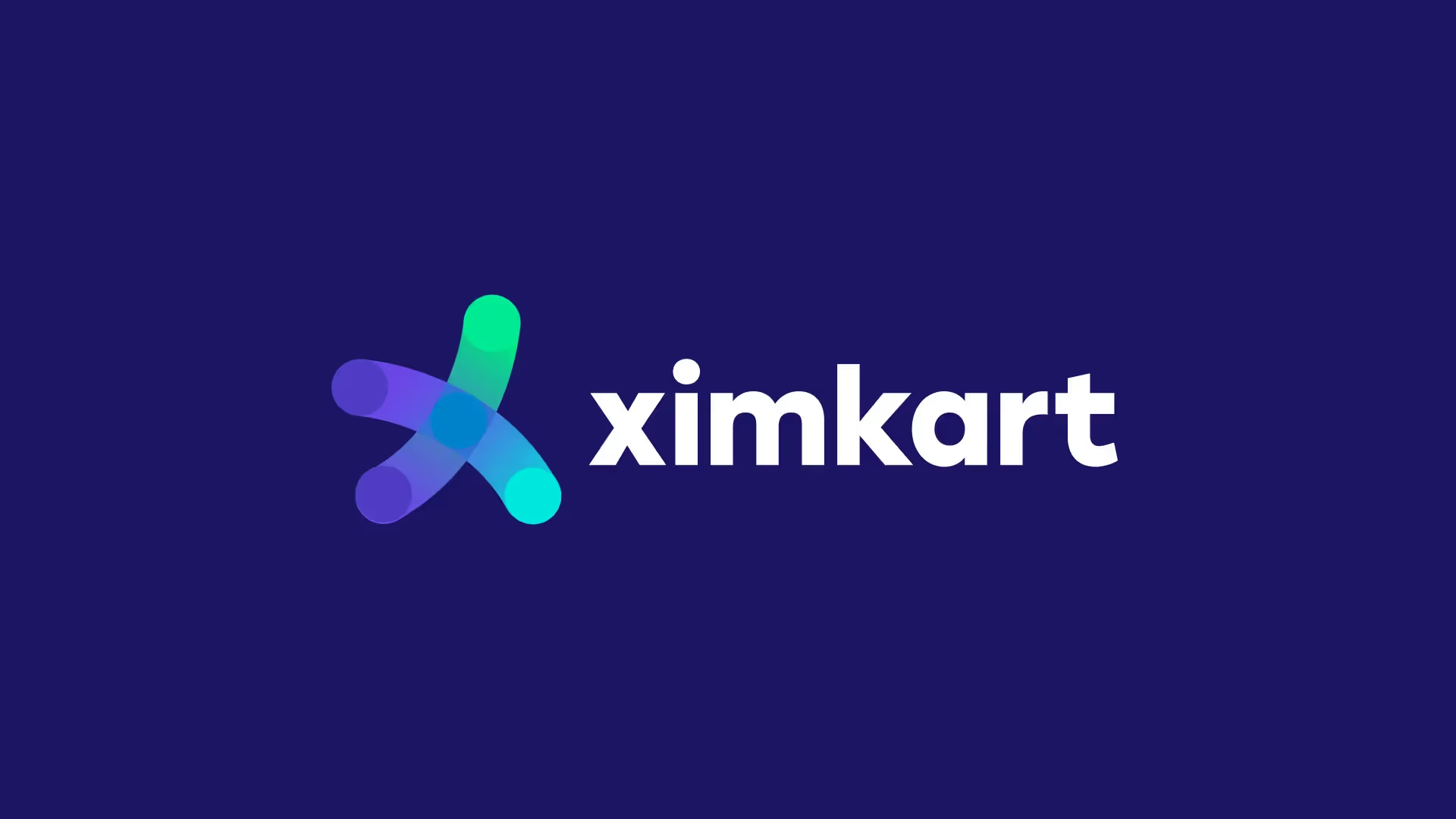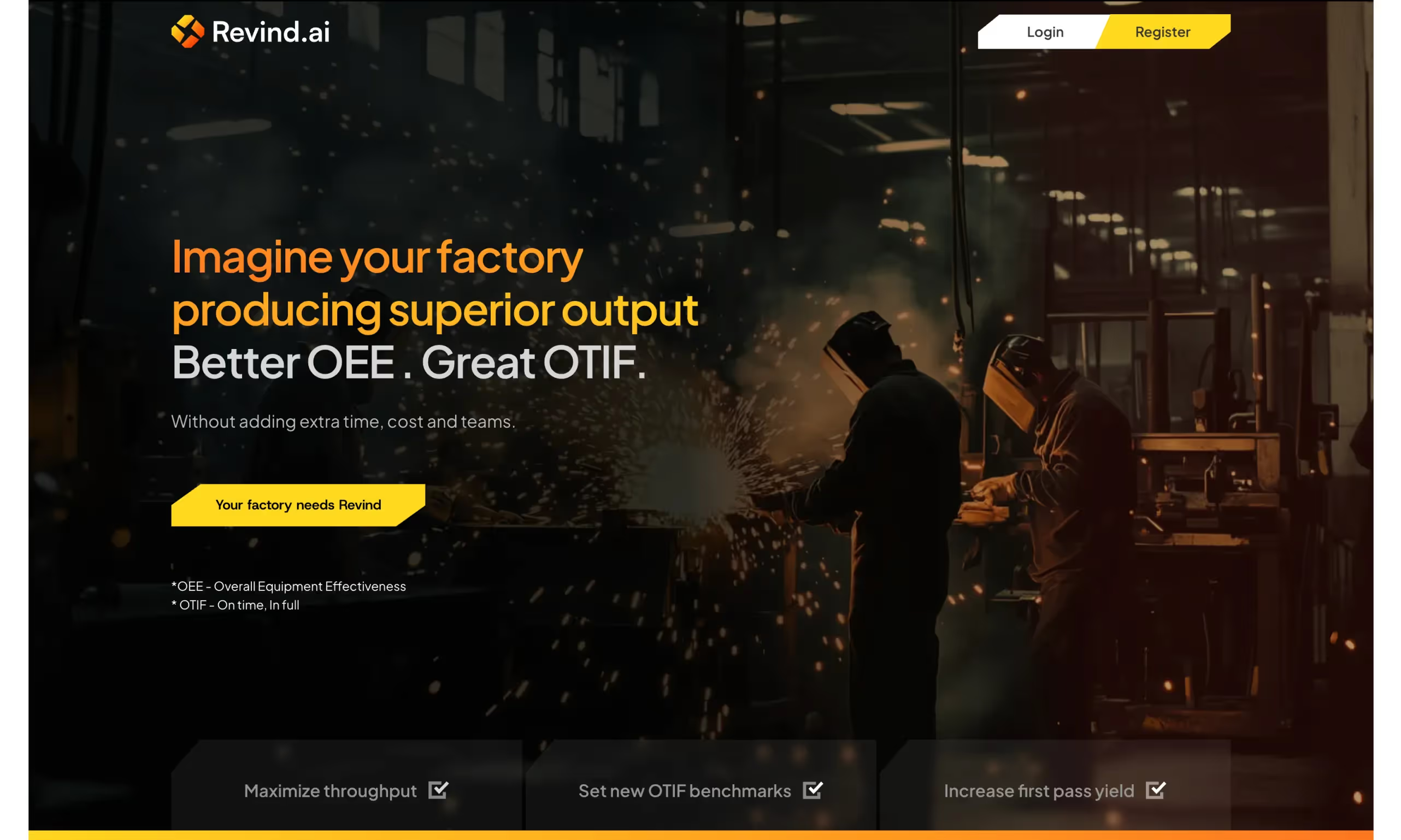Design Agency for Manufacturing Firms - Branding, Website
A design agency for manufacturing firms builds branding and websites that highlight industrial expertise, driving online visibility and client engagement.
Design Projects in Manufacturing Industry
Expertise in brand development and delivering results through modern web solutions
Specializes in B2B branding and website development for manufacturing, engineering, and industrial companies. Their focus is on strategic clarity, visually strong brand identities, and custom website designs that drive online visibility and client engagement. Notable manufacturing clients include TurboTech, Ajax Engineering, and Genrobotics Medical. Core services include brand strategy, visual identity, website design (Webflow expertise), and messaging.
Clients from Manufacturing Industry













A design agency for manufacturing firms focuses on creating branding, websites, and digital experiences tailored to industrial businesses. They specialize in visually strong, functionally sound platforms that highlight technical capabilities, product details, and industry expertise, helping firms like TurboTech, Ajax Engineering, and Genrobotics Medical, Ayr Energy boost their online presence, showcase innovations, and engage potential clients. Services include brand identity development, responsive website design, SEO, and integrated marketing solutions to enhance visibility in the B2B manufacturing landscape.
In the competitive manufacturing industry, good design is essential for attracting better clients and talent. A strong visual identity, modern website, and consistent branding communicate professionalism, precision, and innovation—qualities that resonate with both clients and skilled professionals. By investing in thoughtful design, manufacturing brands can differentiate themselves, build trust, and showcase their expertise, ultimately leading to stronger business relationships and a more attractive workplace for top talent.
When Your Manufacturing Website Costs You $2M Orders
A beauty brand walked away from a $2M production contract last quarter.
The manufacturer's sales director had done everything right, the facility was world-class, the capacity was there, the pricing was competitive. They sent the brand a link to their website.
The brand ghosted.
Nobody picked up the phone. No "thanks but no thanks." Just silence.
The manufacturer later learned the brand had gone with a competitor. The facility specs? Nearly identical. The pricing? Similar. The deciding factor wasn't what happened in the plant. It was what happened when the brand landed on the homepage.
The Hospitality Principle
If you understand hospitaltiy industry we can learn soemthing. That translates perfectly to manufacturing websites: people don't buy what's functional. They buy how you make them feel.
Think about it. A glass of water with cucumber instead of tap water. Soft lighting instead of fluorescent bulbs. The way a host greets you within ten seconds of walking through the door. None of these details directly impact the meal, the kitchen works the same either way. But they change everything about whether someone believes they made the right choice.
The same principle applies to manufacturing. Your facility might be ready. Your team might be excellent. But if your website still communicates "we're fine," serious buyers won't bet their companies on you.
Fluorescent Lights and Plastic Chairs
The original website had the right foundation. It was clean. It was organized. It was technically functional.
But it whispered: We work here because it's a job.
The hero imagery showed single bottles on white backgrounds, the kind of shots that work for a boutique shop. Case studies featured startups running 5K-unit production cycles. Nothing on that site suggested a brand could land a $2M order and have the partnership scale smoothly.
What a direct-to-consumer brand placing a $2M production commitment actually needs to feel when they land on your site:
- Safety. Can you handle this? Will you become a bottleneck when they need 100K units in Q3?
- Proof of scale. Show me you've done this before. With brands I recognize. Over years, not months.
- Competence under pressure. When problems arise—and they always do—what's your track record of solving them?
A website saying "we're technically fine" answers none of these questions. It actually raises new ones.
What can be changed?
Rebuilt the site through the lens of hospitality thinking: What does this buyer need to feel?
Hero imagery shifted to production lines running at scale—not glamorous, but honest. The kind of photos that say "this is a real operation."
Case studies now featured beauty brands doing 500K+ annual units with real logos, timelines, and specific outcomes. Not to brag. To answer the questions your $2M buyer already has.
We added a dedicated production capacity page. Equipment specifications. Lead times. Quality control protocols for volume orders. Not to show off technical depth, but to signal: We've thought about exactly what you're worried about.
Every page asked one question: Does this make a $2M buyer feel like they're in the right room?
The Feeling is Non-Negotiable
Your facility might be ready for the contract. Your team might have the expertise. Your pricing might be right.
But if your website looks boutique, serious brands won't trust you to scale with them.
They'll go with someone who understands the difference between being fine and being ready. Between talking about what you do and demonstrating you've done it at the scale they need.
It's not about being flashy. It's not about trendy design or animated interactions.
It's about making someone feel like they walked into the right room.
Like they're about to start a partnership that works.
The cucumber water is optional.
But the feeling? That's everything.
The best website design agencies for manufacturing companies are specialized firms that understand the unique challenges manufacturers face, such as showcasing complex product details, technical specifications, and optimizing for lead generation. Here are some top recommendations:
Leading Agencies for Manufacturing Website Design
- Duck.Design: Known for custom manufacturing website design with a subscription model, focusing on UX and industry-specific research to meet client goals effectively.
- DBS Interactive: Award-winning agency offering enterprise-level websites for industrial brands, integrating user-centered design with marketing strategies for lead generation.
- Invoidea: A one-stop solution provider for manufacturing websites, emphasizing custom features, responsiveness, security, and 24/7 support.
- Lform Design: Specializes in manufacturing with strong focus on responsive design, SEO, and converting visitors into qualified leads.
- Orbit Media: More than 20 years of experience with manufacturing clients, focusing on lead generation and SEO-driven, easy-to-maintain websites.
- Digital Silk: Creates enterprise-level sites tailored for complex product data and B2B decision cycles, integrating ERP systems and handling large inventories.
- WebFX: Full-service digital agency focusing on precision-engineered manufacturing websites designed to generate traffic and high-value leads.
- Bop Design: Boutique B2B marketing agency with expertise in web design, branding, and content marketing tailored for manufacturing companies.
- Blend: Known for measurable results in lead and quote conversions for manufacturing clients.
Cerrion: Branding & Website Analysis
Value-Driven Messaging with Immediate ROI Focus — Cerrion's branding centers on speed and tangible outcomes, emphasizing phrases like "value from day one," "ROI at unprecedented speed," and "automation in days not months." This messaging directly addresses manufacturing decision-makers' primary concern: rapid deployment without lengthy implementation cycles. The positioning overcomes the traditional objection to vision AI by making automation accessible and non-disruptive.
Pragmatic, No-Nonsense Visual Language — The website employs clean, minimal typography and straightforward hierarchies that convey enterprise credibility without unnecessary design flourishes. The layout prioritizes clarity over aesthetics, breaking content into digestible sections ("Plug and play," "Industry Solutions," "Fast automation," "Value capture") that function as decision-making frameworks for buyers. This approach reflects the industrial manufacturing audience's preference for straightforward communication over marketing theatricality.
Problem-Solution Narrative Architecture — Rather than leading with technology specs, Cerrion frames each section around operational pain points (workforce shortages, costly downtime, product loss) followed by their AI agent's immediate response. The language is concrete and action-oriented ("catch issues early," "take action instantly," "fix issues at their root"), making the product tangible rather than abstract. The "success stories" section suggests case studies and measurable results, positioning Cerrion as solution-proven rather than theoretically sound.
















